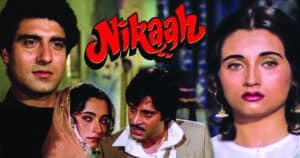The Hindi film industry has produced very few songs for this season, compared to the other three seasons. Perhaps love is scorched by the tropical sun
While literary scholars can argue what T S Eliot actually meant when he called April the cruellest month, it rings true for India. It’s not always about what April entails but what it forewarns. It’s an early sign of a season that can make places uglier than they really are, lives tougher than they were meant to be.
As days start getting longer and hotter, there is almost a psychic resignation that we are back to what we really are — a tropical country where mainland would experience different forms of summer for most months of the year. So how have curators of popular culture treated summer in popular imagination?
Has more dramatic appeal of short-lived seasons like spring, monsoon rains or winter in mainland denied summer its due as the longest witness to our lives in a year? There is always an element of escape which accompanies the responses to heat and dust of the season, particularly in relatively affluent section of the population which can afford to avoid the heat, dust and the sweat that the season brings.
From aesthetics to sheer physical discomfort, summer may leave too much for the rich or even upwardly mobile middle class to negotiate in public spaces. Beyond their first world cocoons of regulated temperature at homes, cars and plush offices, they find something very Third World about the scorching summer heat.
It’s some sort of disillusionment. A painful realisation that globalisation could not bring the European and trans-Atlantic climate to this country. ‘Oppressive heat’ is the operative phrase they use to describe the geographical divide. It is no coincidence that summer days have got short shrift in the nostalgic trips down ‘seasonal’ lanes, the only exceptions being the hill station trips or those clichéd vacations at grandmother’s place.
It’s not that summer has escaped poetic gaze. Talking of Hindi heartland, one is tempted to recall one of the most evocative poems around a summer day in north India. Walking through the lanes of Allahabad in the summer of 1940s, Hindi poet Suryakant Tripathi Nirala observed a woman breaking stones under the hot sun. What followed was Nirala’s Wo todti pathar – a remarkable description of a hot day on a small town’s street. In a way the poem also uses scorching heat as a metaphor for the exploitative heartlessness as seen with the grace of a toiling woman.
What, however, is also important is to see is how Hindi film music, one of the popular reflections of people’s trysts with seasons, has dealt with summer. In plain sight, summer has not enjoyed parity with the spring (basant) or rainy (sawan) seasons in Hindi film songs, and has rarely been associated with Hindi cinema’s idea of romance. It was as late as in 1975 that an idyllic summer night with the pleasant purvaiya (breeze) got its due in Hindi film Mausam. Gulzar penned the nostalgic number for the tunes of Madan Mohan and the voices of Bhupendra Singh and Lata Mangeshkar, as Sanjeev Kumar and Sharmila Tagore emoted:
Garmiyon ki raat jo purvaayian chale/ thandi safed chaadron pe jaagen der tak/ taaron ko dekhte rahein chhat par pade hue/ dil dhoondta hai phir wohi fursat ke raat din.
But if summer nights can leave such trail of memories, how could blazing days be behind? Hasrat Mohani in his famous ghazal had romanticised the summer high-noon with lines describing an unusual response from a beloved for a clandestine meeting. The bare-footed girl chupke chupke heading towards the roof was shown on the silver screen in Nikaah (1982). Ghulam Ali’s voice was enacted by Deepak Parashar as he went down the nostalgic lane humming: Dopaher ki dhoop mein mere bulaane ke liye/ wo tera kothe pe nange paaon aana yaad hai/ humko ab tak aashiqui ka voh zamaana yaad hai/ chupke chupke raat din aansu bahaana yaad hai.

The imprint of summer on our cultural recollections of the times is also associated with seasonal winds. It’s an aspect that has been musically registered in Hindi film songs referring to summer winds. For instance, references to two different forms of summer wind: the gentle purvaiya and the harsh loo have also been heard in two songs which cannot be more different in their lyrical and musical pitch. If you are confused, listen to Lata Mangeshkar urging the purvaiya to be more discreet in Hrishikesh Mukherjee’s Chupke Chupke (1975), with Jaya Bachchan emoting the creeping realisation with Anand Bakshi’s lines set to SD Burman’s tune.
The harsh loo got a passing reference for its romantic effect in a song in which you least expected it could. In Kajrare song in Bunty and Babli (2005), amid the high-pitched exchanges of words, Gulzar slipped in:
Teri baaton main kimam ki khusbu hain/ tera aana bhi garmiyon ki loo hai
The short list, even with possible exclusions, reflects how our most long-lived season has been missing in Bollywood’s musical repertoire. A more authentic musical expression on screen would hopefully not forget that beyond sawan, basant bahaar and mist and dew- covered winter mornings, there is the more frequent karkarati dhoop ke din, jeth k dupahariya.





